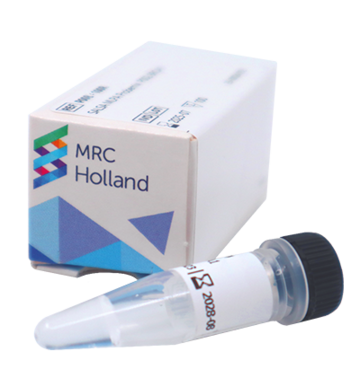One of the most common genetic disorders causing learning disabilities and mild intellectual disability is 22q11.2 Deletion Syndrome (DS). 22q11.2 DS is an autosomal dominant contiguous gene deletion syndrome with a live birth prevalence estimated between 1:3,000 and 1:6,000 among the general population. Cardiac abnormalities are present in ~75% of 22q11.2 DS patients and are the major cause of mortality. Developmental delay, facial dysmorphia, palatal dysfunction, and feeding difficulties are also observed in most individuals with this syndrome. It is now recognized that 22q11.2 DS encompasses the phenotypes previously described as DiGeorge syndrome (DGS), velocardiofacial syndrome (VCFS), conotruncal anomaly face syndrome (CTAF), and Cayler cardiofacial syndrome (asymmetric crying facies), (GeneReview: https://www.ncbi.nlm.nih.gov/books/NBK1523/).
22q11.2 Duplication syndrome (DupS) is a condition caused by an extra copy of a part of chromosome 22 (~3 Mb). The features of this condition vary widely, even among members of the same family (intrafamilial variability). Affected individuals may have intellectual or learning disability, developmental delay, slow growth leading to short stature, and hypotonia. Many individuals with a 22q11.2 duplication have no apparent physical or intellectual phenotype (Draaken et al. 2010, Sedghi et al. 2015). 22q11.2 DupS is much rarer than 22q11.2 DS, and its prevalence remains undetermined.
Cat Eye Syndrome (CES) has a large phenotypic variability, ranging from near normal to severe physical malformations, predominately affecting the eyes. CES is caused by the presence of an extra 22q11.2 copy between the DGS region and centromere, which usually presents as a small extra chromosome, frequently having two centromeres (https://www.omim.org/entry/115470). In many cases this chromosomal abnormality is mosaic.
The relatively high frequency of 22q11.2 copy number changes is prompted by low-copy number repeat (LCR22) sequences situated in this region. The span of the 22q11.2 deletions is variable, although the most common one (~85%) extends from the first (LCR22-A) until the fourth (LCR22-D) repeat (see Table 2 in the product description), leading to the typical 2.54 Mb deletion. In this P250 DiGeorge probemix, 14 probes target this repeat region. Two other deletions, the proximal nested 1.5-Mb (LCR22A–LCR22B) and 2-Mb (LCR22A–LCR22C) have a combined relative frequency of 5–10%. The distal nested (LCR22B–LCR22D and LCR22C–LCR22D) and other more distal deletions flanked by LCRs C–E; D–E; D–F; E–F; F–G are rare, and combined they only explain about 2% of cases (Lima et al. 2010; Michaelovsky et al. 2012; McDonald-McGinn et al. 2015). Haploinsufficiency of the TBX1 gene, situated between LCR22A and -B, is particularly responsible for most of the physical phenotype observed in 22q11.2 DS. Point mutations in TBX1 have also been observed in individuals with DGS-like phenotypes. Although the majority of DGS cases are explained by 22q11.2 deletions, chromosome defects on 4q, 8p, 9q, 10p, and 17p have also been associated with DiGeorge-like symptoms (see Table 2 in the product description for more information).





